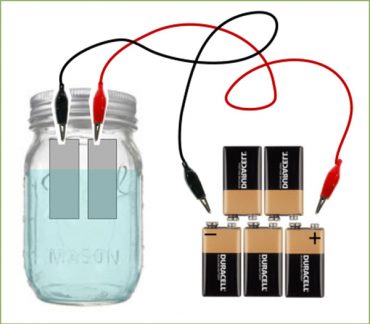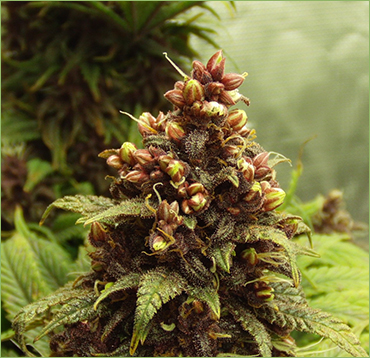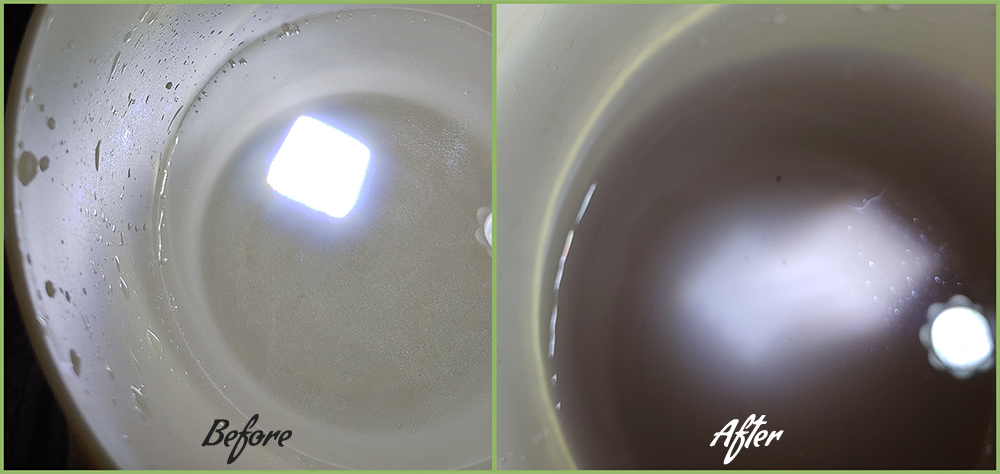
Making feminized cannabis seeds is pretty simple and can save you from having to pay a premium with seed distributors. To make feminized cannabis seeds all you need is a distilled water colloidal silver solution that you can easily make at home. Colloidal silver acts as an ethylene antagonist or inhibitor on your cannabis plant. Ethylene is one of a few known plant hormones and it plays a major role in determining if a plant is to be male or female. High levels of ethylene will push a plant to be female. Inhibiting ethylene in the plant will conversely push a plant to be male. To get started you will need the following:
Creating a Colloidal Silver Solution
- Distilled or RO Water
- 99.99 pure silver wire (can easily be found on amazon but check reviews to make sure others are happy with the silver they received)
- Glass Jar or Bowl
- Qty 3: 9v batteries
- Some wire and a few alligator clips
- TDS Meter
Now you will want to build a contraption that looks like the next image. You can substitute the 9v batteries with any suitable battery of approximately the same voltage. The first time I saw this process the gardener was using an ATV battery. Also, you will have quicker results when running with water that is at a warmer temperature (70°F) than cold water (40°F). This seems to contradict information found online that talks about colloidal aggregation at different pH values, ionic concentrations, and temperatures but has been our direct observation.
You will want to let this device run until you have a solution of about 30 ppm total dissolved solids. Make sure to check the solutions TDS every 30 minutes so that you can gauge how long you will have to run the device and to clean the grime off of your silver rods to keep things running cleanly. As the TDS of your solution increases it becomes more conductive and when the current increases the amount of silver particles being released also goes up. As the current continues to climb larger non-colloidal silver particles start forming in the solution. These large unusable particles will sink to the bottom of the solution and will generally not stay in suspension like the colloidal particles. It would be best to filter your solution through a very fine mesh screen of some sort to remove those larger particles to avoid clogging up your spray bottle.
When you are done you will want to store your solution in a black or opaque container to avoid impurities from forming due to exposure to light and then store in a dark location at room temperature. Make only enough that you will need and always use a fresh solution to avoid problems.
In the “After” image below notice how the high intensity LED flashlight forms a cubic hologram in the colloidal solution compared to the regular water “Before”, this is what you want to see in your solution and is a confirmation that you now have silver particles suspended in solution.
The Application Process
Option 1: Inbreeding
Inbreeding is nothing more than crossing a group, family, or variety of plants within themselves with no additions of genetic material from an outside or unrelated population. The most severe form of inbreeding is the self-cross, in which only one individuals genetic material forms the basis of subsequent generations. 1:1 hybrid populations are only slightly less narrow, derived from the genetic material of 2 individuals.
Process: You begin by spraying the leaves and branch nodes of a known female plant ideally a day or 2 before changing to a 12/12 light cycle. Mist the plant every day for 10 days. About 10 days later those branches will start forming male flowers. Eventually you will be able to collect and use that pollen to pollinate the female flowers of other plants which will then produce your feminized seeds.
Option 2: Selfing
Selfing is the process of creating seed by fertilizing a plant with pollen obtained from itself. The result of a self-cross is a population of plants that derive from a single individual. The first generation population derived from selfing an individual is called the S1 population. If an individual is chosen from the S1, and again selfed, the resulting population is denoted the S2 generation. Subsequent generations derived in the same manner are denoted S3, S4, etc.
Process: After the plant has already started flowering (around week 3) you can mist the entire plant including leaves and flowers every day for 10 days and then stop. About 10 days later male flowers will form mixed in with the female flowers and the plant will pollinate itself and produce female seeds.
You can store collected pollen in the freezer for later use. Make sure the collected pollen is clean of any plant debris and store in an airtight container. Properly prepared and stored pollen will remain viable for several months when stored at 32°-20°F/0°-7° C.
One thing to note is that the colloidal silver solution can create a messy over-spray residue so avoid spraying plants in an area that you care about. Always move plants to a bath tub, shower stall or an area that you don’t care about when spraying. If using a bath tub or shower stall you will want to bleach the affected areas to remove the over-spray residue.
Seeds take about 4-6 weeks to fully develop after pollination occurs. Feed plants a well rounded fertilizer when seed production is the primary goal. Discard sprayed plants after harvesting your seeds and always avoid consuming any material from treated plants.




